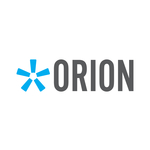Hotsourcing: the third way for sell-side ops

Brian Collings is chief executive at Torstone Technology
The rationale behind outsourcing is evolving. A decade ago, one of the driving factors behind outsourcing was reducing cost and headcount. By contracting an external service provider, the idea was to leverage their economies of scale and technological automation to reduce the number of staff needed to perform non-core tasks in-house.
However, with the growing regulatory and compliance burden, firms are increasingly becoming more cautious about outsourcing, writes Brian Collings. In many cases, financial institutions are offloading complex and sensitive financial operations to third parties. In a post-crisis world, regulators are now heavily scrutinising firms’ internal processes, and where an activity is fully outsourced, it is much more difficult to clearly demonstrate that due diligence is being undertaken, especially if things go wrong.
In some cases, this caution has driven a “business as usual” approach which leads firms to hang on to legacy systems in-house rather than outsource, even where it is inefficient to do so. In other cases, headcount (and subsequently cost) is not reduced as senior staff must be retained to closely oversee outsourced processes and ensure compliance with post-trade regulation. This defeats the object of outsourcing in the first place and fails to mitigate costs.
As reported recently in the media, banks in particular are coming to see the value in leveraging third party providers to prevent costly repetitive technology development, and to address the problem of legacy systems. In more lucrative years gone by, many sell-side institutions spent vast sums developing tailored IT systems in-house. However, these systems have failed to keep pace with evolving financial markets and have suffered from subsequent underinvestment. They have often been updated piecemeal to cope with change, leading to overlapping spider webs of dated technology which cannot provide an accurate, holistic overview of risk exposures.
What’s more, for many legacy systems to work effectively there is often a reliance on the knowledge of their in-house originators, who take the institutional knowledge needed for their smooth running and maintenance with them when they leave or retire. These archaic systems create internal inefficiencies and subsequently increase the costs and risks of trade processing. Banks and brokers seeking to compete effectively will find it increasingly difficult without a single platform in place which provides a holistic view of risk and reporting that is easily visible, verifiable and accessible.
In addition, while legacy systems may not have a tangible “charge”, they do cost the financial institution in terms of requiring ever increasing maintenance resources due to out of date technology and needing greater numbers of staff due to the lack of automation. As a result, sell-side institutions are coming to see the urgency in replacing legacy systems. However, this can be a daunting task as this infrastructure is heavily embedded into internal processes. There can be significant business and project risk in seeking to replace in-house technology like-for-like, not to mention budgetary demands which can fall on deaf ears at board level.
But as service delivery becomes more sophisticated, a third way is emerging for sell-side institutions amid these challenging conditions. “Hotsourcing” is an option for institutions looking at the next generation of their technology requirements. This is the term given to an approach of outsourcing, on the right modular technology, which allows for partial rather than full outsourcing of operations.
As a result, banks and brokers can be selective, creating an optimised blend of the best of their own resources while using cost-effective operational processing. This means using the best of technology advancement – automation, straight through processing and the cloud – while retaining senior oversight of operational processes in-house, which is essential in a regulated environment. Rather than tearing down legacy systems entirely, this allows for a phased approach where institutions can test outsourcing of different business processes to find the most effective mix.
The savings that can be achieved by deploying these changes are significant, meaning that banks and brokers still mitigate spend, even with the retention of knowledge and expertise. Typically, they can cut costs by up to a third of the total cost of ownership with this model. A study on wholesale and investment banking, published in March 2015 by Morgan Stanley and Oliver Wyman, highlighted that there are remaining outsourcing opportunities for banks with potentially huge economic benefits. They highlighted the possibilities of what they term “smart sourcing”, where processes such as reference data or collateral management are outsourced to industry utilities. It estimated that the total economic benefit of smart sourcing could reach $3-5 billion.
What’s more, upgrading systems to reduce manual processes and replace legacy hardware can help make firms more competitive, efficient and ease the compliance burden. In today’s regulatory maze, this can make the critical difference to sell-side institutions.











































